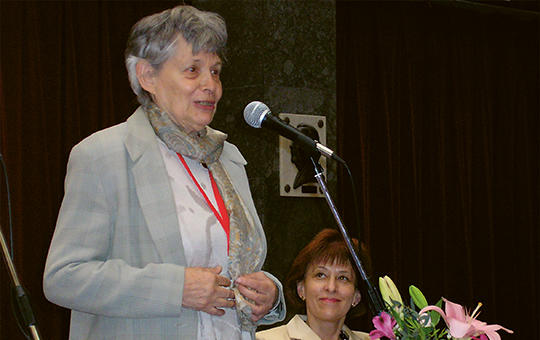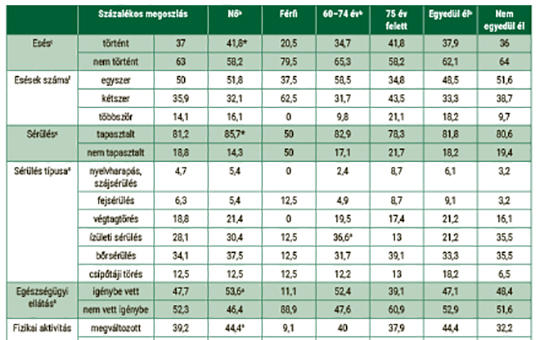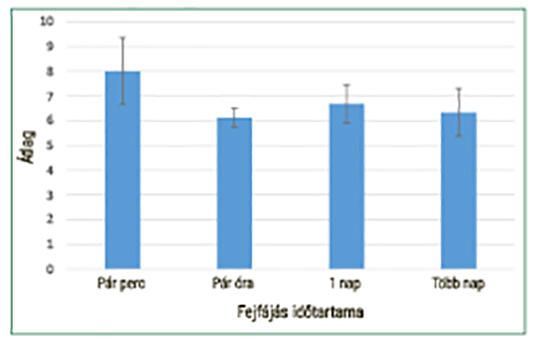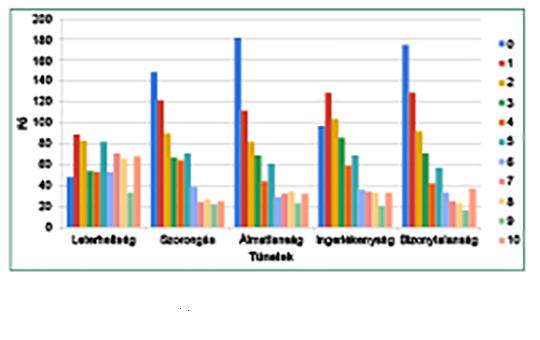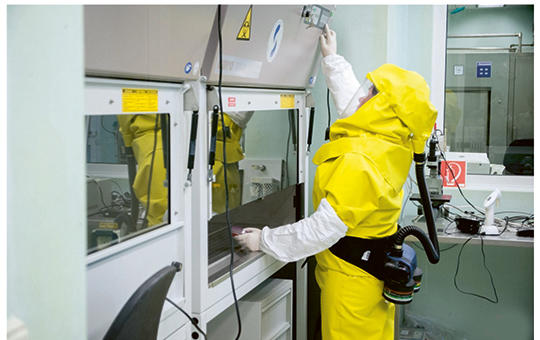The eLitMed.hu medical portal uses computer cookies for convenient operation. Detailed information can be found in the Cookie-policy.
Journal of Nursing Theory and Practice - 2022;35(5)
Content
[Alaine Polcz, the Hungarian Pioneer of the Hospice Movement, was born 100 years ago]
[Dr. Alaine Polcz of the Hungarian pioneer of the hospice movement and thanatology was born 100 years ago, on October 7, 1922. She is hungarian psychologist, writer, wife of Miklós Mészöly of the Kossuth Prize-winning Hungarian writer. On the occasion of the centenary year, we present Alaine’s work and experts share their personal and professional thoughts about her. In 1991, Alaine established the Hungarian Hospice Foundation. It was then that the hospice movement began to develop, the aim of which is to provide help not only to the sick, but also to the family members who care for them during the period of illness and grief. Her writing legacy and wise insights have influenced many people to this day and are with us.]
[Investigating older People living in their own Homes’ Knowledge of Risk Factors and their daily Fall Prevention Behaviours]
[To assess the prevalence of falls, knowledge of fall risk factors and daily fall prevention behaviour of elderly living in their own homes. 173 elderly people were surveyed. In addition to sociodemographic variables, we examined the prevalence of falls, risk of falling, knowledge of risk factors, modification of living environment, and daily fall prevention behaviors. Descriptive and mathematical statistics (chi-square, t-test, correlation analysis) were used (p<0.05). 37% of elderly people had a fall in the past year and 81.2% of them had experienced an injury. Among the risk factors, modifiable risk factors were the least accepted by the elderly. The idea of creating a safe environment was addressed by 72.8% of the sample, but only 52.9% had intervened. Changes were more likely to be adopted by women (p=0.025). Among the preventive activities, asking for help (12.1%) and using walking aids (18.5%) were the least adopted. Fall prevention programs that focus on modifiable risk factors are needed.]
[The Manifestations of Headaches and their Impact on Everyday Activities]
[In Hungary at least 3.5 million people had headache. The aim of our research was to acess the occurrence of headaches, causes and symptoms. Quantitative, cross-sectional research was carried between 01.03.2021 and 30.11.2021. The target group is university students aged 18-45 years who have experienced headaches in the last 3 months (n=111). We used self-made and validated questionnaire. Descriptive statistic, two-sample t-test, correlation, ANOVA and Khi-square tests were calculated using SPSS 22.0 program (p<0.05). We detected: 63.06% tension, 8.11% migraines, 4.5% clusters, 24.32% mixed. The intensity of pain is significantly related to the frequency and duration of the appearance of headaches (p<0.05). Pain intensity doesn`t show a significant connection with stress levels, development of sleep disturbance, types of headaches, decreased concentration and learning methods (p>0.05). It can be said that the intensity of pain is influenced by the frequency of the appearance of headaches and the duration of pain.]
[The Impact of the Coronavirus Epidemic on the Mental Health of Hungarian Nurses]
[The aim of our research was to find out the impact of the epidemic on the mental health of nurses in Hungary during the second wave. We assessed the levels of lethargy, anxiety, insomnia, irritability and insecurity before, during and, if there was a reassignment, during the epidemic and what influenced these symptoms the most. Descriptive statistics using SPSS 25.0 and Microsoft Excel 2010 were used along with χ2-test, ANOVA test, T-test (p<0.05). The results of 700 respondents showed that all the five symptoms mentioned above increased in value as a result of the epidemic (p<0.0001). Appropriate protective clothing decreased the value of anxiety (p=0.043). 11.6% of respondents indicated that they were not tested. Willingness to vaccinate was 70% at this time, significantly influenced by education (p=0.039). The coronavirus epidemic has significantly worsened the mental health of nurses. The difficulty of the period is also indicated by the fact that a large proportion of nurses were deprived of social contacts and 60% indicated that they had thought about leaving the health care system.]
[Learnings from the local Monkeypox Epidemic]
[Monkeypox is an infectious disease that has been known for several decades and spreads from animals to humans, caused by the monkeypox virus, which belongs to the orthopoxviruses. Variola, the smallpox virus is also a member of the same family of viruses. The first human case of monkeypox was described in 1970 in the Democratic Republic of the Congo. The disease spreads epidemically in West and Central Africa, and has only occasionally caused diseases outside of Africa. The monkeypox virus also spreads from one person to another through injuries, body fluids, respiratory droplets, and through close contact with contaminated materials such as beddings. The presence and spread of the virus in Europe is a novelty. The symptoms of the disease are similar to smallpox, which the WHO declared to have disappeared from the face of the Earth in 1980. The first monkeypox outbreak outside Africa was registered in 2003 in the United States of America. Since May 7, 2022, many European countries have reported diseases caused by monkeypox to the WHO, and on May 31, zoonosis was also identified in Hungary. According to the WHO, most patients self-reported to be MSM men. The MPXV epidemic can be prevented by isolating the infected patients, following hygiene rules, properly washing one’s hands, alcohol-based disinfectants, and the appropriate use of personal protective equipment in health care. In our article, we analyse with the current monkeypox epidemic and discuss the following topics: epidemiology, diagnostics, clinic, infection control rules, and characteristics of the spread of monkeypox.]
1.
Clinical Neuroscience
Is there any difference in mortality rates of atrial fibrillation detected before or after ischemic stroke?2.
Clinical Neuroscience
Factors influencing the level of stigma in Parkinson’s disease in western Turkey3.
Clinical Neuroscience
Neuropathic pain and mood disorders in earthquake survivors with peripheral nerve injuries4.
Journal of Nursing Theory and Practice
[Correlations of Sarcopenia, Frailty, Falls and Social Isolation – A Literature Review in the Light of Swedish Statistics]5.
Clinical Neuroscience
[Comparison of pain intensity measurements among patients with low-back pain]1.
Clinical Neuroscience Proceedings
[A Magyar Stroke Társaság XVIII. Kongresszusa és a Magyar Neuroszonológiai Társaság XV. Konferenciája. Absztraktfüzet]2.
3.
Journal of Nursing Theory and Practice
[A selection of the entries submitted to the literary contest "Honorable mission: the joys and challenges of our profession" ]4.
Journal of Nursing Theory and Practice
[End of Life and Palliative Care of Newborns in the Nursing Context]5.
Journal of Nursing Theory and Practice
[Aspects of Occupational Health Nursing for Incurable Patients ]